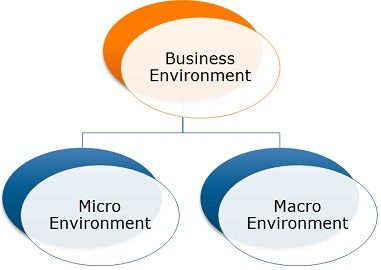How Micro & Macro environmental factors having their influences with businesses?
How Micro & Macro environmental factors having their influences with businesses?
Marketing environment is the combination of external and internal factors and forces that affect the company’s ability to establish a relationship and serve its customers.
“A company’s marketing environment consists of the actors and forces outside of marketing that affect marketing management ability to build and maintain successful relationships with target customers”. – Philip Kotler
Microenvironment is the environment which is in direct contact with the business organization and can affect the routine activities of business straight away. The microenvironment is a collection of elements include suppliers, competitors, marketing intermediaries, customers and the firm itself.
- Suppliers are the ones who provide inputs to the business-like raw material, equipment and so on.
- Competitors are the rivals, which compete with the firm in the market and resources as well.
- Marketing intermediaries may include wholesalers, distributors, and retailers that make a link between the firm and the customers.
- Customers / Consumers are the ones who purchase the goods for their own consumption. They are considered as the king of business.
- The firm itself is an aggregate of a number of elements like owners like shareholders or investors, employees and the board of directors.

Macro Environment is the general environment within the economy that influences the working, performance, decision making and strategy of all business groups at the same time. Those are outside forces that are not under the control of the firm but have a powerful impact on the firm’s functioning. PESTLE is a term used to define the macro environmental factors, is stand for political, Economic, social, Technology, Legal and Environmental.
1.Demographic Environment
The demographic environment is made up of the people who constitute the market. According to their size, density, location, age, gender, race, and occupation.
2.Economic Environment
The economic environment constitutes factors that influence customers’ purchasing power and spending patterns. Include the GDP, GNP, interest rates, inflation, income distribution, government funding.
3.Physical Environment
The physical environment includes the natural environment in which the business operates. This includes the climatic conditions, environmental change, accessibility to water and raw materials, natural disasters, pollution etc.
4.Technological Environment
Constitutes innovation, research and development in technology, Technology is one of the biggest sources of threats and opportunities for the organization and it is very dynamic.
5.Political-Legal Environment
The political & Legal environment includes laws and government’s policies prevailing in the country.
6.Social-Cultural Environment
The social-cultural aspect of the macro-environment is made up of the lifestyle, values, culture, prejudice and beliefs of the people. This differs in different regions.
Conclusion: Successful businesses recognize the interplay between micro and macro factors and proactively adjust their strategies to leverage opportunities and mitigate risks by staying attuned to these influences, businesses can make informed decisions and sustain their growth in a dynamic and evolving marketplace.
Thank you for sharing this insight, Successful companies closely monitor and adapt to these influences, helping them to seize opportunities, mitigate risks, and align their strategies with the changing landscape.
